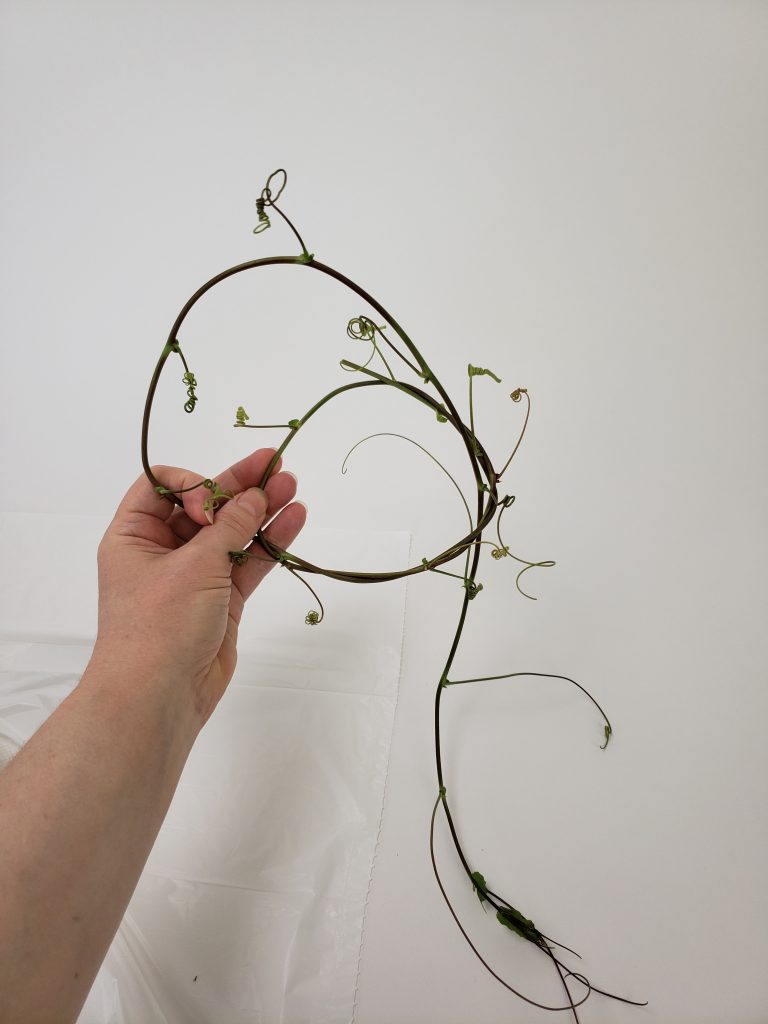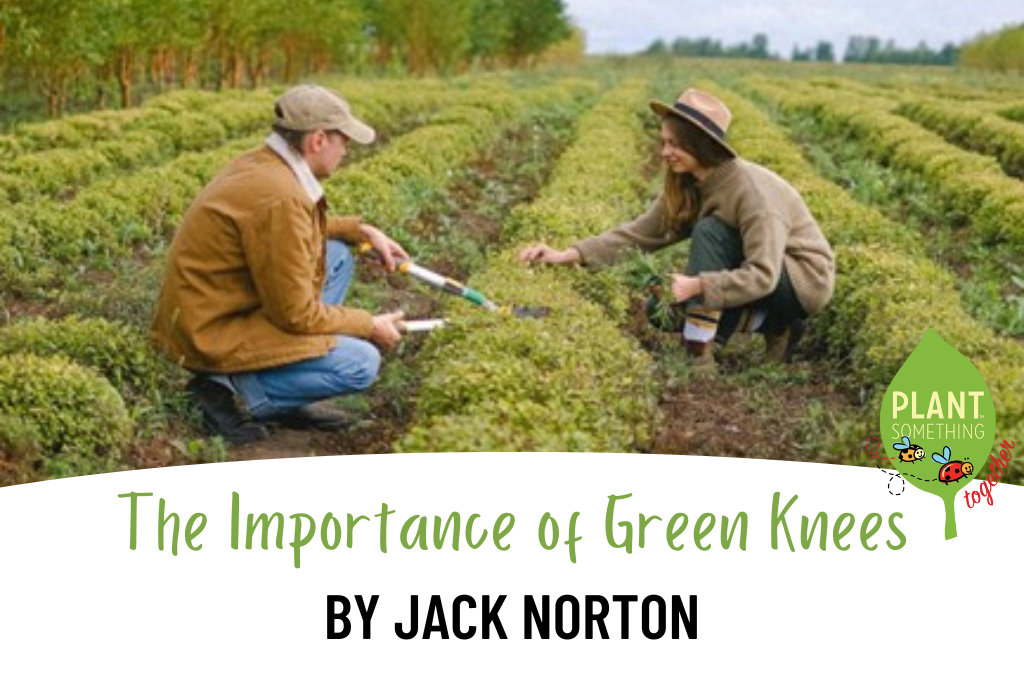Spring equinox has long been celebrated as a time of renewal and new beginnings. The sights and smells of spring are everywhere and the last frost date (on average) is about a week from now. It is the perfect time to grow something new… like a new hobby, perhaps?

In the coming months I want to introduce you to a new way of designing with flowers and plant material. I want to show you how you can craft and create with nature with those less considered parts of your plants. Weave with the foliage that grows on the flower stems, the roots below and vines in between… all those interesting parts of the plant that are only really available if you grow the flowers yourself.
This month, we look at planning what to grow in our cut garden to create an all natural “crafting pantry” for us in the year to come. It is not just about growing what you love, although that is certainly a benefit, but rather to truly make use of our resources to grow those things that help you achieve your floral design visions.
So whether you are growing along as a complete beginner arranger, are an experienced gardener and would like to arrange the flowers that you grow, are a florist or arranger and would like more creative options that are also more sustainable or have been growing your own flowers for years but are curious what more you can learn… It all begins by evaluating our cut flower needs.
Evaluating Your Cut Flower Needs
To get us growing here are a few important questions to answer so that you can plan along with us and plant a floral craft pantry uniquely your own:
What is your cut flower garden goal?
Knowing why you are growing flowers gives you a clearer idea of what it is you should be growing.
What are your values as a flower arranger and what kind of flower grower do you dream of being?
It is important to know what you stand for, as a gardener and arranger. For instance, is it important to you to invite wildlife into your garden? Do you plant to create a more sustainable garden from the roots up?
How much time and energy do you have to invest into growing flowers?
You have to be realistic about how much time you can set aside for growing a cut garden that will supply you with flowers all year round.
What are your growing conditions and seasons like?
Vancouver’s growing season stretches on average 221 days long, from March 29 to November and this will definitely dictate what you can grow. The province of British Columbia also covers all ten different planting zones, making it fascinating to see how plants grow slightly differently from across the province.
How much money would you be willing to invest into growing flowers?
Even if you only have a limited budget… you still need to budget to make sure your resources go where it is most needed. A good example of this will be investing in preparing the soil to set up the right conditions for your flowers to flourish. Yes this leaves less to spend on flowers but if your entire budget goes into flowers and you have no money left for preparing the soil or feeding the plants you might not get any flowers at all.
How much space do you have to garden in?
The good news is that 5-6 square meters is a perfectly reasonable amount of space for a cut garden. But knowing exactly what you have to work with can help you allocate the right space for exactly the right plant.
What are your floral needs?
Grow what you need to design with, then add a few flowers for nature to enjoy and a few more to share.
For more inspiration I will show you my answers to these questions on my website. It might surprise you! My “cut garden” comes with some unique challenges. For one it is tiny, and for another it is on the 7th floor on our balcony… it can be done!
You can get an even earlier start by growing some Spring inside. This month we start even smaller. How about growing a mini wheatgrass patch to display your very first flowers from now until Easter? Everything in this week’s arrangement was grown right here in my small cut flower container garden. You don’t even have to add as much as I did. Simply grow the wheat in a shallow container for your Easter egg hunt… or follow along and make a centerpiece to welcome spring by cutting the flowers to encourage even more in the months to come.
Design Tutorial
Start your wheat seeds by placing them in a container with holes for drainage (a clear vegetable packaging container works great) and wet the seeds twice a day for about a week. Make sure the seeds are not standing in water. Simply run water over it… and set it aside. On day 7 your grass patch will be ready to design with. You can find a full step by step picture Tutorial on my website this week
Step 1:

You will need about ½ cup, or one container, of sprouted wheatgrass. I grew mine from West Coast Seeds but I also noticed that Garden Works are selling the grass in small pots if you want to skip the sprouting step. Cut away the sides of the container so that it serves as a base and place the grass on a display container. I used an upturned wine glass but you can use a vase or cake stand if you prefer.
Step 2:
Cut a vine from your cut garden. Grape will also look gorgeous. I used a passion fruit vine because of the gorgeous tendrils.

Step 3:

Measure the vine to fit snugly around the base of the wheat grass. Roll the vine and make a large knot. Thread the vine through the circle you have made and continue to wind the entire vine into a wreath.
Step 4:
Slip the vine wreath over the base of the wheatgrass and rearrange the tendrils so that they look wild and overgrown.

Step 5:

Add your design details. I used green strawberries and small long stemmed flowers (pansies and violas are wonderful for this… and edible!) to decorate the grass patch. Lastly add in a few chocolate Easter eggs to nestle around the grass on the vine, away from the water, to finish the design. By the time you need to water the grass the eggs would probably have disappeared and you can add more eggs for everyone to nibble as we design our way to Easter… Enjoy!
I would love to see your wheatgrass arrangements, so please join in. Also let us know what you plan to grow in your cut garden or what questions you have about growing flowers to arrange with, or if you have any tricks or resources that you can share with other readers. Follow us on Instagram @Plantsomethingbc @chris10debeer and tag your pictures with #growafloralfcraftpantry or sign up for my website email if you want to write to me.



